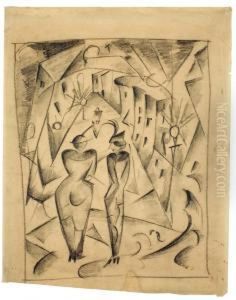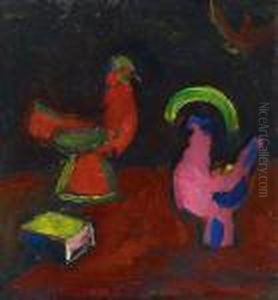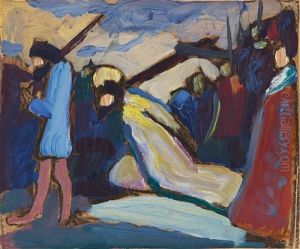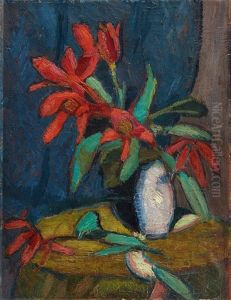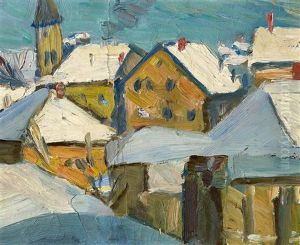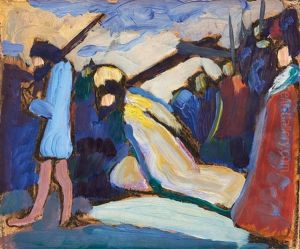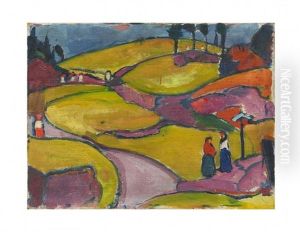Hermann Stenner Paintings
Hermann Stenner was a promising young German artist whose career was tragically cut short by his early death at the age of 23. Born on December 12, 1891, in Bielefeld, Germany, Stenner showed an early aptitude for art. His talent was evident, and he was determined to pursue an artistic career, despite the relatively conservative climate of his hometown.
In 1910, Stenner began his formal art education at the Royal Academy of Arts in Stuttgart, where he studied under the tutelage of Robert Poetzelberger, Christian Landenberger, and Friedrich von Keller. During his time at the academy, Stenner was exposed to various styles and movements, which helped him develop his own artistic language. His works from this period show the influence of Impressionism and Jugendstil, the German version of Art Nouveau.
Stenner's style continued to evolve rapidly, and by 1912, he had moved to Weimar to study at the Grand Ducal Saxon School of Art under the Belgian artist Henry van de Velde, who was a significant figure in the Art Nouveau movement. This period was crucial for Stenner's artistic development. He moved away from the decorative aspects of Jugendstil and began to embrace the more modernist approaches of Expressionism.
In 1913, Stenner continued his studies at the Academy of Fine Arts in Munich, which was a vibrant center for new art movements. Munich exposed him to the works of the Blue Rider (Der Blaue Reiter) group, an influential collective that included artists such as Wassily Kandinsky, Franz Marc, and August Macke. The bold use of color and the dynamic forms in the works of the Blue Rider artists had a profound impact on Stenner's own paintings.
Tragically, Hermann Stenner's burgeoning career was abruptly ended by World War I. He was drafted into the German army and was killed in action in Poland on June 5, 1914, at the young age of 22. His death meant the loss of a talented artist who could have contributed significantly to the development of modern art in Germany. Despite his brief career, Stenner left behind a body of work that is still admired for its vibrant color palette and the synthesis of various styles that characterized the art of his time. His legacy is preserved in various collections and museums, and his work continues to be appreciated by art historians and collectors alike.
